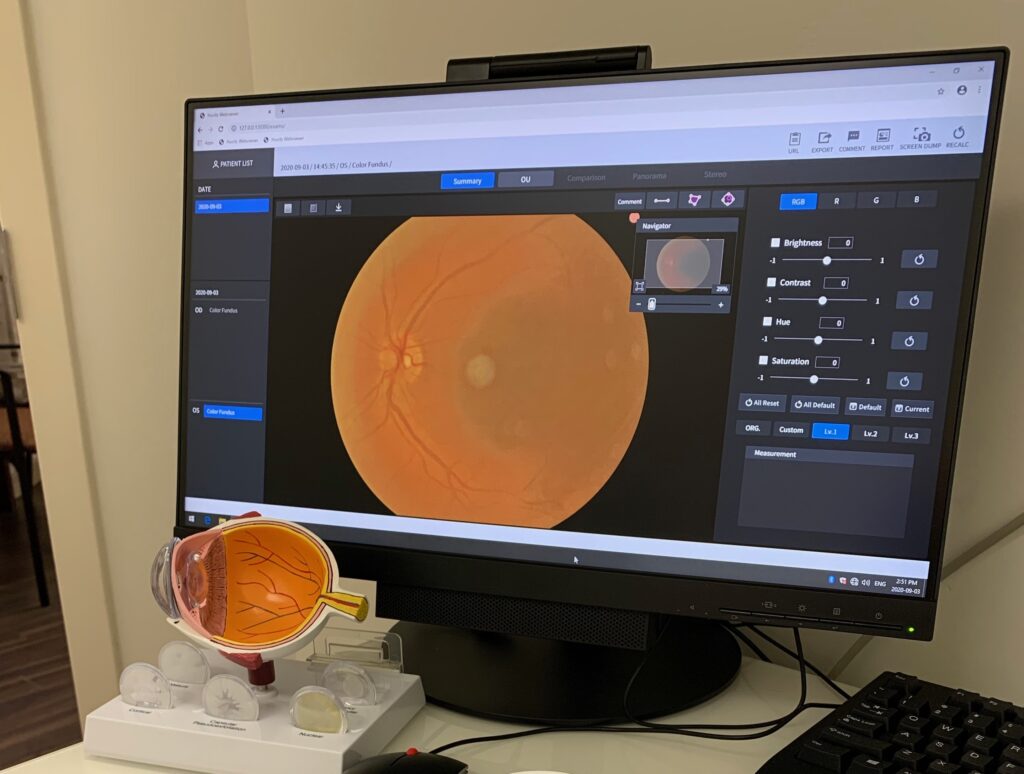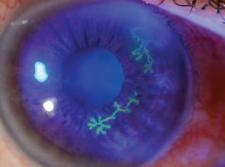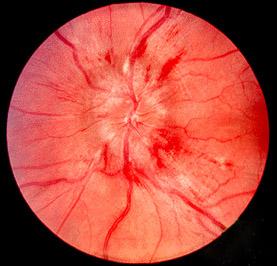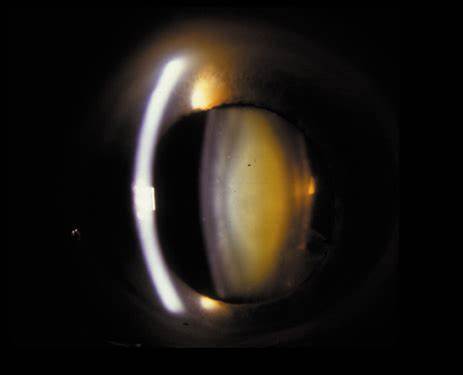Comprehensive Eye Examinations
Regular eye examinations are important. Not only do they help you achieve your best day to day vision, they may reveal eye diseases that left untreated, could cause permanent vision loss. Glaucoma, amblyopia and some forms of iritis may take years to show symptoms but can be successfully treated if found in a timely fashion. Diabetes, high blood pressure and stroke are just a few of the systemic diseases that cause changes to the insides of the eye, an area only a trained clinician can evaluate.
A child’s eyes should be examined by age 6 months. This is often done by the physician at a well-baby check. Dr. Yeomans examines children at 9 months of age; once they start attending school, children need to be examined yearly. Adults who value their sight should consider annual examinations.
Technology and Vision Care
In the early 2000s, as computers became more powerful, some big advancements were made in vision care. High quality digital photos of the inside of the eye were achievable, quickly and accurately even through difficult eye sizes and shapes. This revolutionized the clinician’s ability to detect and document even very small abnormalities for treatment and management over time.
Then came the optical coherence tomography instrument or OCT. It uses light waves to image each of the 10 layers of the retina, so that the clinician can see into tissue that could not be seen in the past. This enables earlier detection and timely treatment of diseases like macular degeneration. It helps distinguish different diseases that otherwise look the same on the surface. Not only does that provide better care, it often reduces unnecessary trips to sub-specialists, an important factor especially during COVID-19.
Another amazing outcome of using the OCT is being able to better diagnose and monitor glaucoma. Glaucoma is a “silent” disease. It doesn’t hurt, doesn’t cause any symptoms and is hard to accurately detect until permanent vision loss has already occurred. The OCT compares the patient’s scan to a known data set to diagnose glaucoma earlier. Even more importantly, measurements of the same patient over time are used to diagnose disease earlier and predict disease that may occur.
The Ontario Health Insurance Plan (OHIP) covers only basic care for vulnerable populations. No changes have been made to OHIP to provide funding for technological advancements in eye care. At Westgate Optometry, we have invested in the technology necessary to manage your visual health to the highest level.









